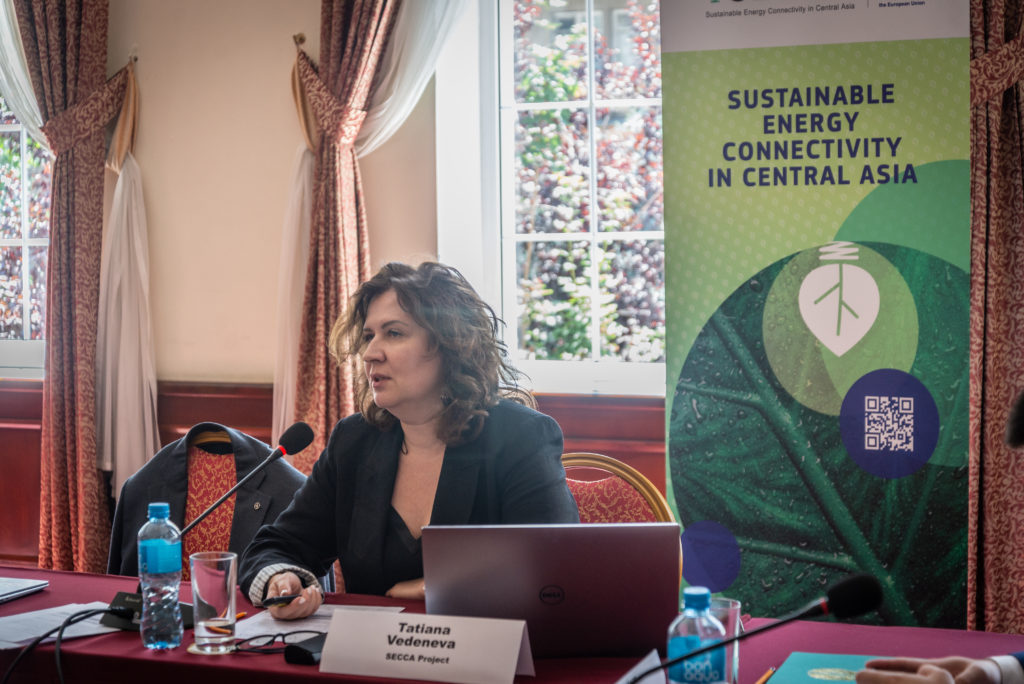Bishkek, Kyrgyzstan – Improving the energy performance of buildings has many benefits for people, environment, and economy. It improves health and wellbeing of building users, saves energy, cuts down emissions, addresses energy poverty, and ensures energy independence.
The Kyrgyz Republic is prioritising energy efficiency and energy conservation efforts and has set to optimise energy use in government and public buildings[1] across the country as the first step towards reducing overall energy consumption in the buildings sector. According to International Energy Agency, energy savings potential in buildings in Kyrgyzstan is estimated at a minimum of 15 %, while modernisation and rehabilitation in the energy system could yield 25 % savings.[2]
Did you know that…
- To achieve a zero-emission and fully decarbonised building stock by 2050, the EU has established a solid legislative framework and taken decisive actions. The EU’s revised Energy Efficiency Directive puts an obligation on the Member States to renovate every year 3 % of all public buildings to upgrade their energy performance. By 11 October 2025, the EU countries will have to establish and make publicly available an inventory of buildings that are owned or occupied by public bodies and that have a total useful floor area of more than 250 m2. In addition, to underline the exemplary role to be played by the public sector, there is a new annual energy consumption reduction target of 1.9 % for the public sector. The Energy Performance of Buildings Directive requires EU countries to develop national long-term renovation strategies, which must include policies and actions to target all public buildings.[3] Public buildings and social infrastructure are one of the focus areas of the Renovation Wave strategy, which is part of the European Green Deal, and aims to, amongst other, break down long-standing barriers to energy and resource-efficient renovation and support investment starting from public and less efficient buildings.[4]
The SECCA’s technical support in relation to development of the Pilot inventory included a review of the regulatory and institutional framework on energy performance of buildings in the country, developing an inventory mechanism for collecting detailed data, processing and analysing the collected data, and preparing recommendations for further development and implementation of the inventory mechanism for government and public buildings. Total 33 buildings have been selected to conduct the pilot inventory.
As a result of the review and analysis, SECCA Senior Expert Gulsara Kasymova has reviewed the responsibilities and tasks of government bodies directly authorised to implement the state policy in the field of energy performance of buildings and conduct the buildings inventory. She has also developed a Questionnaire on buildings inventory data collection, collected and analysed data on the energy consumption per square meter of useful area for the 33 buildings. The analysis revealed a wide variation in energy consumption across these buildings, with values ranging from 39.9 kWh/m2 to 845.35 kWh/m2, compared to the standardised value of 100 kWh/m2 to 250 kWh/m2.
The SECCA project will continue working with and providing consultations to the Institute on further development of the Pilot inventory of public buildings, as well as other stakeholders to strengthen national capacities for energy efficiency deployment.
Footnote and References:
[1] In the Kyrgyz Republic, the term “public buildings” refers to buildings and facilities designated for public use, including those occupied by authorities and administrative bodies.
[2] International Energy Agency, Kyrgyzstan Energy Profile: Sustainable Development, https://www.iea.org/reports/kyrgyzstan-energy-profile/sustainable-development (Accessed on 19.02.2024)
[3] European Commission, Public Buildings, https://energy.ec.europa.eu/topics/energy-efficiency/energy-efficiency-targets-directive-and-rules/public-buildings_en#central-government-buildings-under-directive-201227eu (Accessed on 19.02.2024)
[4] European Commission (2020), A Renovation Wave for Europe – greening our buildings, creating jobs, improving lives, COM(2020) 662 final.
Relevant information:
 As part of its technical assistance to the Kyrgyz Republic, the SECCA project has prepared a Draft New Framework for Quality Control System of Buildings Energy Performance Certification.
As part of its technical assistance to the Kyrgyz Republic, the SECCA project has prepared a Draft New Framework for Quality Control System of Buildings Energy Performance Certification.



